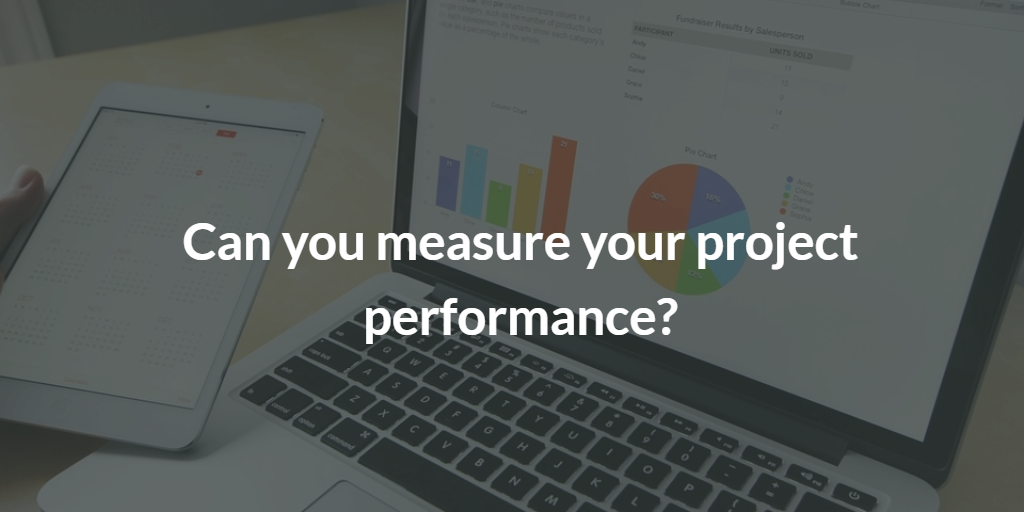Categories
Tags
Newsletter
Subscribe to the QRP International neswletter and get all the news on trends, useful contents and invitations to our upcoming events
Subscribe
The Dutch say “Meten is Weten” – to measure is to know. Measurements have become fashionable everywhere. In companies, in schools, in hospitals … everything is driven by targets and measurements. Everyone is trying to deliver their targets and key performance indicators (KPI’s).
The fashion has come to the world of Project Management. However, in Project Management, targets are used slightly differently. Rather than set an arbitrary target, you create a plan. To measure, you compare your plan against reality (your “actuals”). Project performance measures how well you are delivering against your plan.
The traditional performance measurements for projects have always been cost and time. There’s even an acronym OTOB which neatly sums up the Project Manager’s drive to deliver on time, on budget. When people speak about project performance, they typically are talking about OTOB: are you delivering on time, on budget, relative to your original agreed plan?
If OTOB is the traditional measurement of Project Performance, modern Project methods have followed the fashion, and added more measurements. Some people have added a third dimension, Quality, and transformed OTOB into OTOBOQ.
The latest Prince2 manual (2009) follows the fashion. The subject of measurements arrives in Chapter 1, which introduces 6 key aspects of performance (whereas in the previous version it was buried in a later chapter). Prince2 suggests that the best practice is to control not just Time and Cost, but also Scope, Quality, Risk and Benefits.
In reality, you may need to go a little further: you may need to break Cost into Financial cost and Effort, as these must be controlled very differently. Financial cost is based on expenditure of money (purchase orders, invoices…), while Effort is man-days of work. So you have up to 7 aspects of performance to control. For each, you need to compare plan versus actuals:
❑ Time
Time is the easiest measurement. Your plan is probably a schedule of work (typically a Gantt diagram), including milestones (and for Prince2, stage boundaries). So this plan gives your planned time. As the work advances, you track actual time using the dates that the work was actually finished.
❑ Financial Cost
Financial cost data is also quite easy to measure. You can estimate your planned costs in various ways. Some people estimate from the Gantt diagram; others collate the information in a Business Case. You should measure actual costs as soon as you commit to expenditure (e.g. when you raise a purchase order). Be proactive about recording actual costs: don’t wait until the invoices are recorded in your accounting system, and certainly don’t wait until they are paid.
❑ Effort
Effort is mandays of work. Effort can be easy to estimate, but is often difficult to measure. Using a Gantt diagram, you can estimate effort in man-hours or man-days. This gives your planned effort. Effort is difficult to measure, because most organisations don’t have time-sheet systems (or if they have them, they are not used by all project contributors). And, as it’s surprisingly difficult to deploy time sheets solutions (i.e. to get enough people to use them week by week), measuring actual effort is also surprisingly difficult. (For many projects, it’s effectively impossible).
❑ Scope
Scope used to be hard to control, but with modern methods, it’s a lot easier. If you use Prince2’s product based planning, you can predict your planned scope based on the product decomposition. It’s easy to detect when the products are delivered, so you can easily track actual scope. (It’s not just Prince2 that helps. Some Agile methods, such as Agile Atern, also are making control of scope easier: Atern uses a Prioritised Requirements List).
❑ Quality
Prince2 also makes it easier to control quality. Using Prince2’s product based planning technique, you can do simple-but-effective quality planning, giving your planned quality. As the work is done, each planned quality test is done, which gives your actual quality.
❑ Risk
Risk is typically controlled though regular estimates throughout the project, rather than by measurements. Each time you plan (or replan), it’s wise to perform a risk analysis. This gives your forecast of risk – your planned risk. When you execute your risk counter-measures, you mitigate the risk, and lower your forecast risk level. To measure your actual risk is difficult, and probably impossible. The best you can do is to revise your estimates, using regular risk analyses.
❑ Benefits
Benefits are also typically controlled through regular estimates, rather than measurements. In many projects, you cannot measure the benefits, as they are realised after the project has closed. Your Business Case should give the planned benefits. If you can’t measure actual benefits, you should review estimates regularly: using Prince2, you will review your Business Case at the end of each stage (and the associated Benefits Review Plan).
So for Project Managers, “Meten is Weten” (to measure is to know) is a little simplistic. You need to control project performance, but you can’t measure everything.
Certainly Prince2 helps you to “know” your project – it gives you a framework for controlling your performance – and that helps with boosting your performance. Give it a try!